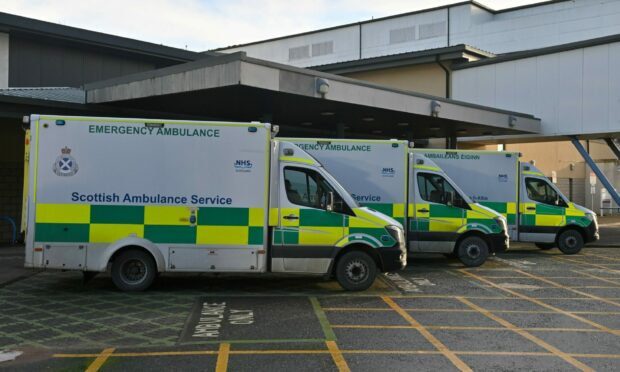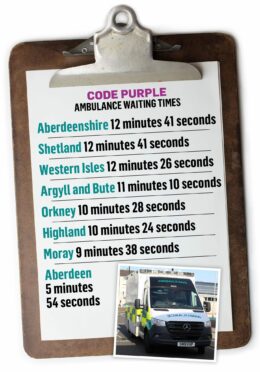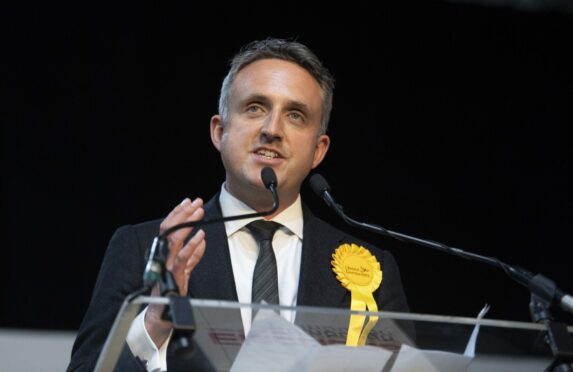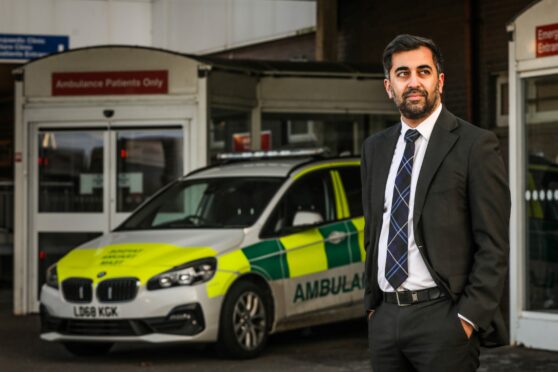Patients in Aberdeenshire and Shetland are having to wait almost 13 minutes for an ambulance to arrive for a life-threatening illness – one of the highest in Scotland.
New figures show that in 2021-22, it took 12 minutes and 41 seconds on average for an ambulance to get to a patient in the most serious “code purple” category – 50% longer than the target time.
The target is just eight minutes.
Waiting time targets missed
The data found this was one of the highest response times to code purple patients in the whole of Scotland.
Other islanders also have long waits for life-threatening conditions – 12 minutes and 26 seconds in the Western Isles and 10 minutes and 28 seconds in Orkney.
Elsewhere, the waiting times are 11 minutes and 10 seconds in Argyll and Bute, 10 minutes and 24 seconds in the Highlands, and nine minutes and 38 seconds in Moray.
All of these figures are above the national average of eight minutes and 52 seconds.
The Scottish Ambulance Service defines code purple as “our most critically ill patients”.
These are patients who have a 10% or more chance of having a cardiac arrest, which is when the heart suddenly stops pumping blood and starving the brain of oxygen.
This causes the patient to fall unconscious and stop breathing.
Around 53% of code purple patients are experiencing cardiac arrest.
However, “purple” calls in Aberdeen are answered within five minutes and 54 seconds – the quickest response times in Scotland.
The waiting time for code yellow calls, the least serious category, was over an hour in the city.
Health secretary should go, say Lib Dems
Scottish Liberal Democrat leader Alex Cole-Hamilton, who obtained the data, says the government must take urgent action to deal with this “healthcare crisis”.
He said: “People in life-threatening situations need to know that someone will be there to help them when they need it.
“Tragically and despite the best efforts of hard-pressed paramedics, all across Scotland, this is simply not happening.”
He says it is “unforgivable” for the SNP to blame the ambulance waiting times on the pandemic, as the former chief executive of NHS Scotland Paul Gray said the “pressure cooker crisis” would have happened regardless.
Mr Cole-Hamilton is now calling for the health secretary to resign.
He said: “Anyone can see this is likely to be one of the hardest winters the NHS has ever faced.
“Staff are already overwhelmed and patients are already suffering.
“The Scottish Government has continuously ignored the warnings of ambulance staff.
“The health secretary must fundamentally change his approach and get control of the crisis, otherwise he will need to go because patients and staff have been taken for granted for far too long.”
Additional ambulance staff hired
The Scottish Ambulance Service says its latest statistics show the median response time to its most serious cases is currently seven minutes and 13 seconds.
A spokesperson added the 30-day survival rate is also at its highest-ever level.
They said: “The response times quoted are averages and will include calls which have started as a lower call category, for example, amber or yellow, and were then subsequently upgraded.
“We continually look for opportunities to improve our response times and we have recently recruited 540 extra frontline staff and are working closely with hospitals which experience delays in accepting ambulance patients.”
A spokesman for the Scottish Government added: “Patient safety remains our priority and we apologise to anyone who has experienced a long wait.
“Despite a rise in demand for higher acuity calls, the ambulance service responded to over 68% of their highest priority calls in under 10 minutes and over 99% in under 30 minutes in 2021/22.”



